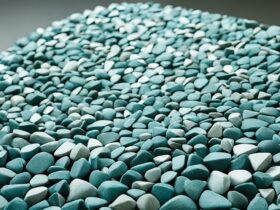Acne is a common skin condition that affects millions of people worldwide. While acne breakouts can be frustrating and uncomfortable, they often leave behind scars that can be even more distressing. Acne scars can be a source of low self-esteem and social anxiety, making it important to understand their permanence and how to effectively treat and prevent them.
Key Takeaways
- Permanent acne scars come in various forms, including atrophic scars, hypertrophic scars, and keloid scars.
- Effective treatment options for permanent acne scars include laser therapy, chemical peels, microneedling, and dermal fillers.
- Prevention methods for permanent acne scars include practicing good skincare habits, avoiding picking or popping pimples, and seeking professional help for severe acne breakouts.
- Natural remedies can aid in fading the appearance of permanent acne scars, such as aloe vera, tea tree oil, and lemon juice.
- Understanding the nature of acne scars and their permanence is essential for effective treatment and prevention.
Types of Acne Scars
Acne scars come in various shapes and sizes, and understanding the different types can help determine the best course of treatment. Here are the most common types of acne scars:
| Type | Description |
|---|---|
| Atrophic scars | Depressed scars that appear as small indentations in the skin. They are caused by a loss of tissue under the skin. |
| Hypertrophic scars | Bumpy scars that appear elevated above the skin’s surface. They are caused by excess collagen production during the healing process. |
| Keloid scars | Thick, raised scars that extend beyond the borders of the original pimple. They are caused by an overproduction of collagen that extends beyond the original wound area. |
Atrophic scars are the most common type of acne scar and can be further divided into ice pick scars, boxcar scars, and rolling scars, each with their distinct characteristics. Hypertrophic and keloid scars, on the other hand, are less common but can be challenging to treat due to their size and severity.
Ice Pick Scars
Ice pick scars are atrophic scars that appear as small, deep holes in the skin. They are caused by the destruction of collagen during the healing process, resulting in a depression in the skin. Ice pick scars are typically narrow and have jagged edges, resembling a small puncture wound.
Boxcar Scars
Boxcar scars are also atrophic scars that appear as round or oval depressions in the skin. They have sharp, defined edges that give them a box-like appearance. Boxcar scars are typically wider than ice pick scars and can be shallow or deep.
Rolling Scars
Rolling scars are atrophic scars that appear as broad depressions in the skin. They have sloping edges that give them a rolling or wave-like appearance. Rolling scars are typically shallower than ice pick or boxcar scars, but they can cover a larger surface area.
Knowing the type of acne scars you have is essential for determining the best course of treatment. While some scars may respond well to topical treatments such as chemical peels and retinoids, others may require more invasive procedures such as laser therapy or dermal fillers.
Treating Permanent Acne Scars
While permanent acne scars cannot be completely eliminated, there are several treatments available that can help minimize their appearance. The best treatment for permanent acne scars varies depending on the severity and type of scarring.
Laser therapy is a popular option for treating permanent acne scars. It works by removing the top layer of skin, promoting collagen production and stimulating skin renewal. This treatment can provide significant improvement in the appearance of deeper scars.
Chemical peels are another effective treatment for permanent acne scars. This treatment uses a chemical solution to remove the top layer of skin, promoting new skin growth and reducing the appearance of scars.
Microneedling is a treatment that involves using a device with tiny needles to create micro-injuries on the surface of the skin. This stimulates collagen production and helps to reduce the appearance of scars. Microneedling is often used in combination with other treatments, such as topical serums or platelet-rich plasma (PRP) therapy.
Dermal fillers can also be used to treat permanent acne scars. This treatment involves injecting a filler substance into the scar, filling in the depressed area and creating a smoother surface.
It is important to note that these treatments may require multiple sessions and can take several months to see results. It’s best to consult with a dermatologist or skincare professional to determine the best treatment plan for your specific needs.
Prevention Methods for Permanent Acne Scars
Preventing acne scars is crucial to avoid the permanent scarring that can result from severe breakouts. By following these simple prevention techniques, you can reduce the risk of developing permanent acne scars:
1. Practice Good Skincare Habits
One of the most effective ways to prevent acne scars is to maintain a clean and healthy skincare routine. Regularly wash your face with a gentle cleanser to remove dirt and oil that can clog pores and lead to breakouts. Avoid using harsh scrubs or abrasive products, which can irritate the skin and cause scarring.
2. Avoid Picking or Popping Pimples
As tempting as it may be, avoid picking or popping pimples. This can lead to inflammation, infection, and scarring. If you must pick a pimple, do it with clean hands and a sterile tool, such as a comedone extractor, to reduce the risk of infection and scarring.
3. Seek Professional Help for Severe Acne Breakouts
If you experience severe acne breakouts, it’s important to seek professional help from a dermatologist. They can provide personalized treatment plans and prescribe medications that are best suited for your skin type and condition.
4. Protect Your Skin from the Sun
Exposure to the sun’s harmful UV rays can cause hyperpigmentation and worsen the appearance of acne scars. Protect your skin by wearing a broad-spectrum sunscreen with an SPF of at least 30 and avoiding direct sunlight during peak hours.
5. Eat a Healthy Diet
A well-balanced diet can help prevent acne breakouts and reduce the risk of scarring. Eat plenty of fruits, vegetables, and whole grains, and avoid foods that are high in sugar, fat, and dairy.
By following these prevention methods, you can reduce the risk of developing permanent acne scars and maintain healthy, clear skin.
Natural Remedies and Fading Permanent Acne Scars
While permanent acne scars cannot be completely eliminated, natural remedies and home-based skincare routines can help improve their appearance. Using natural ingredients like aloe vera, tea tree oil, and lemon juice can aid in fading the appearance of permanent acne scars.
Studies suggest that aloe vera has anti-inflammatory and antimicrobial properties that can help reduce acne and prevent scarring. Applying aloe vera gel to the affected area can help soothe the skin, reduce inflammation and prevent further scarring.
Tea tree oil is another natural remedy that can help improve the appearance of acne scars. It contains antimicrobial and anti-inflammatory compounds that can help reduce the development of acne and fade acne scars. Diluting tea tree oil with a carrier oil like coconut oil or jojoba oil in a 1:1 ratio can help prevent skin irritation and promote healthy skin.
Lemon juice is a natural bleaching agent that can aid in reducing the appearance of scars. Applying lemon juice to the affected area can help lighten the skin and fade acne scars. However, it is essential to use caution when applying lemon juice, as it can cause skin irritation and dryness. Diluting lemon juice with water and using a cotton ball to apply it can help minimize skin irritation.
In addition to natural remedies, incorporating a healthy skincare routine that includes exfoliating and moisturizing can help improve the texture and appearance of permanent acne scars. Exfoliating can help remove dead skin cells and promote cell turnover, while moisturizing can help keep the skin hydrated and improve its overall appearance.
It is important to note that natural remedies and home-based skincare routines may take longer to produce desired results and may not be as effective as professional treatments for permanent acne scars. Consulting a dermatologist for professional advice and treatment options can help individuals achieve the best results.
Conclusion
In conclusion, taking care of your skin is important to prevent permanent acne scars. Understanding the types of acne scars and their permanence can help you choose the right treatment options and prevention methods.
Importance of seeking professional assistance
If you have severe acne breakouts, seek professional help to minimize the risk of developing permanent acne scars. A dermatologist can provide guidance and prescribe medication to improve your skin’s texture.
A comprehensive skincare routine
Taking care of your skin is crucial in preventing and treating acne scars. Develop a comprehensive skincare routine that includes cleansing, moisturizing, and applying sunscreen daily to protect your skin from harmful UV rays.
Natural remedies
Natural remedies can be a great addition to your skincare routine, aiding in fading the appearance of permanent acne scars. Try using aloe vera, tea tree oil, and lemon juice, along with other home remedies and skincare routines, to improve your skin’s texture.
In summary, by following a consistent skincare routine, seeking professional help, and incorporating natural remedies, you can improve the appearance of permanent acne scars. Remember, prevention is key, so always practice good skincare habits and avoid picking or popping pimples. With time and patience, you can regain your confidence and enjoy clearer, smoother skin.
FAQ
Which acne scars are permanent?
In this section, we will delve into the topic of acne scars and determine which types are considered permanent. Understanding the different types of acne scars and their permanence is crucial for effective treatment and prevention methods.
What are the types of acne scars?
Acne scars can manifest in various forms, including atrophic scars, hypertrophic scars, and keloid scars. We will explore each type in detail, discussing their characteristics and how they can impact the skin’s appearance.
How can permanent acne scars be treated?
While permanent acne scars cannot be completely erased, there are several treatments available that can help minimize their appearance. We will discuss various treatment options, including laser therapy, chemical peels, microneedling, and dermal fillers, highlighting their efficacy for permanent acne scars.
What are the prevention methods for permanent acne scars?
Prevention is key when it comes to avoiding permanent acne scars. We will provide practical tips and techniques for preventing acne scars, such as practicing good skincare habits, avoiding picking or popping pimples, and seeking professional help for severe acne breakouts.
Are there natural remedies for fading permanent acne scars?
Natural remedies can aid in fading the appearance of permanent acne scars. We will explore the use of natural ingredients, such as aloe vera, tea tree oil, and lemon juice, along with other home remedies and skincare routines that can help improve the appearance of permanent acne scars.
What are the key takeaways?
Understanding the nature of acne scars and their permanence is essential for effective treatment and prevention. While some acne scars are permanent, there are various treatments and prevention methods available to help minimize their appearance. By following a comprehensive skincare routine and seeking professional assistance, individuals can improve their skin’s texture and regain confidence.





